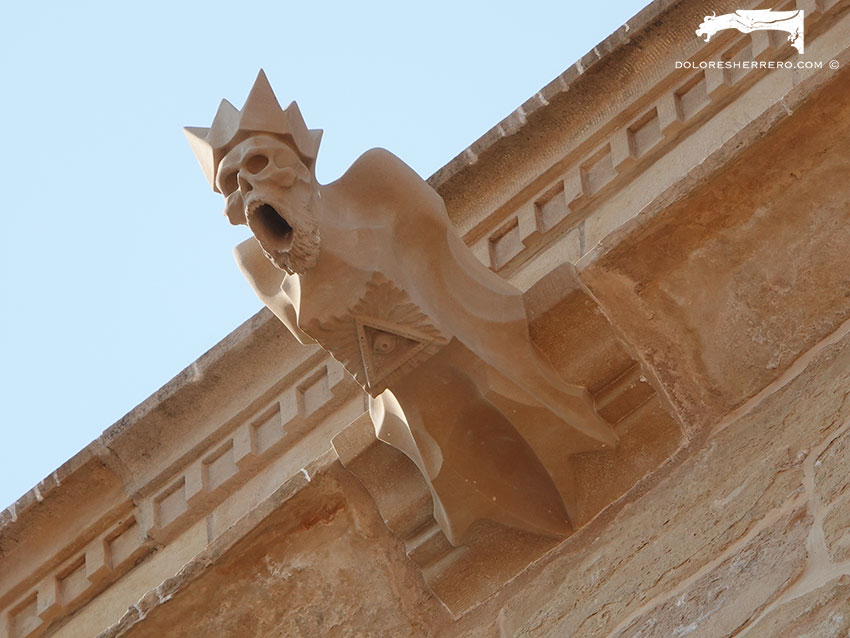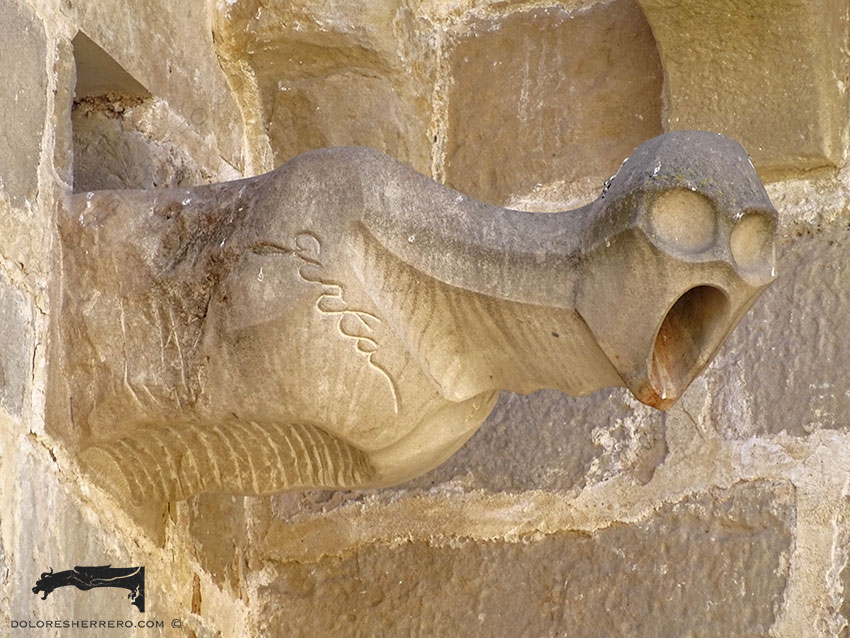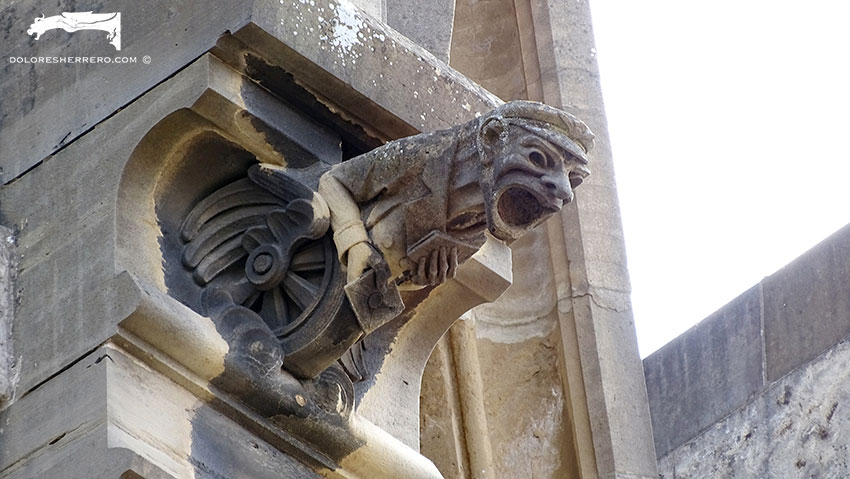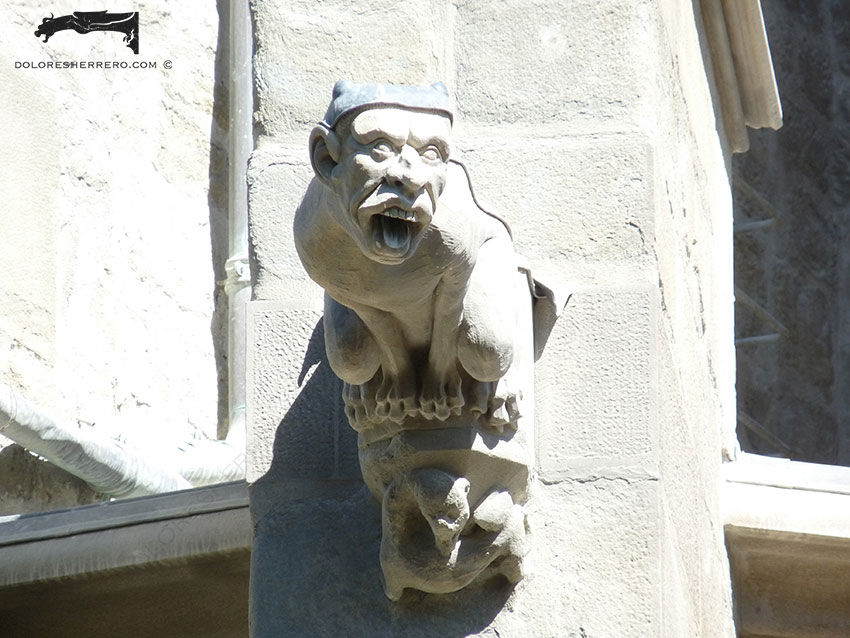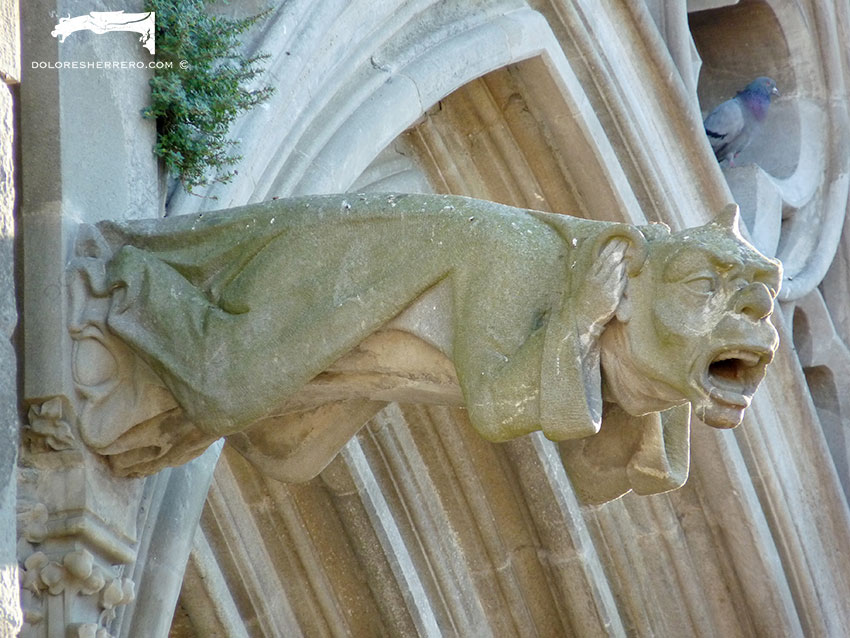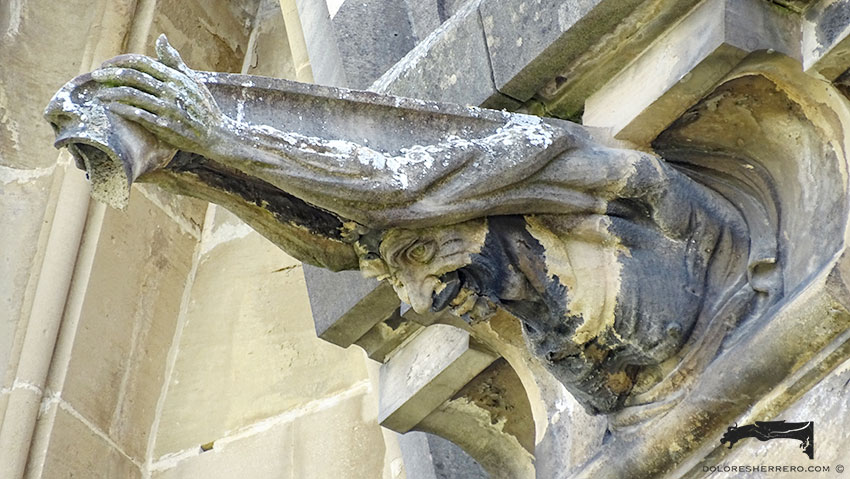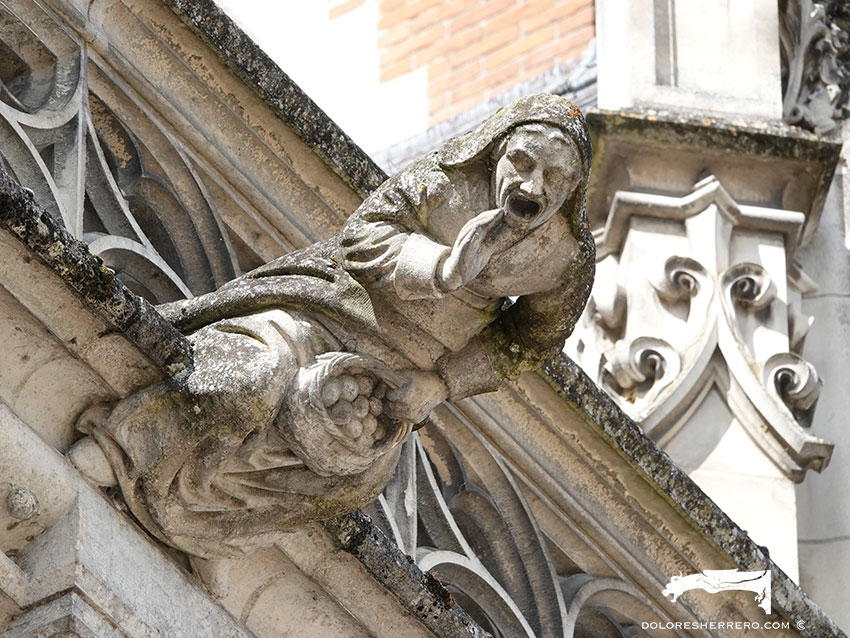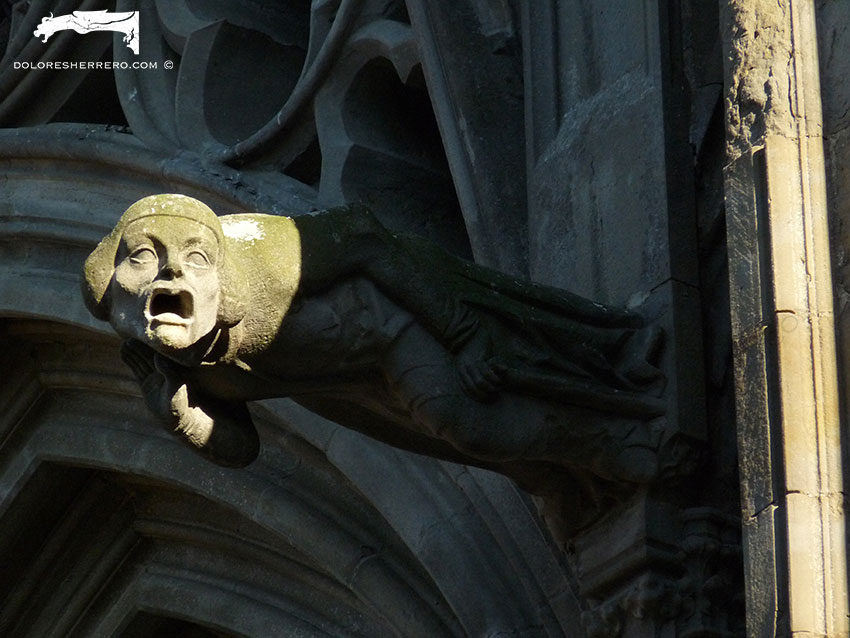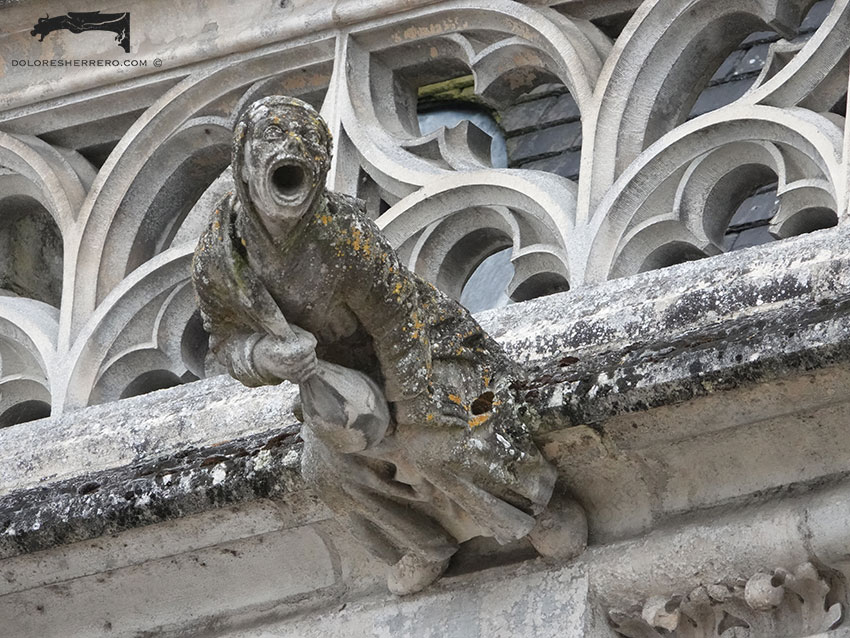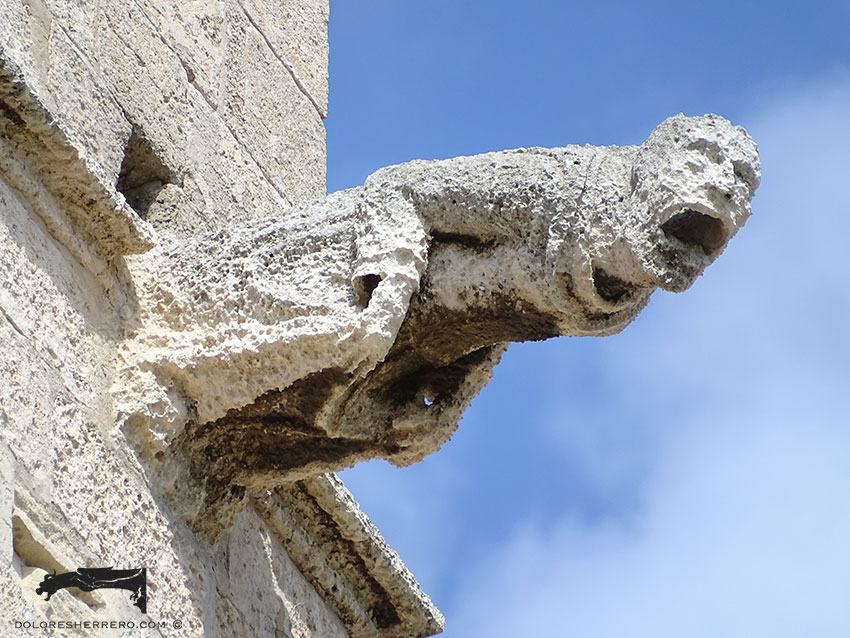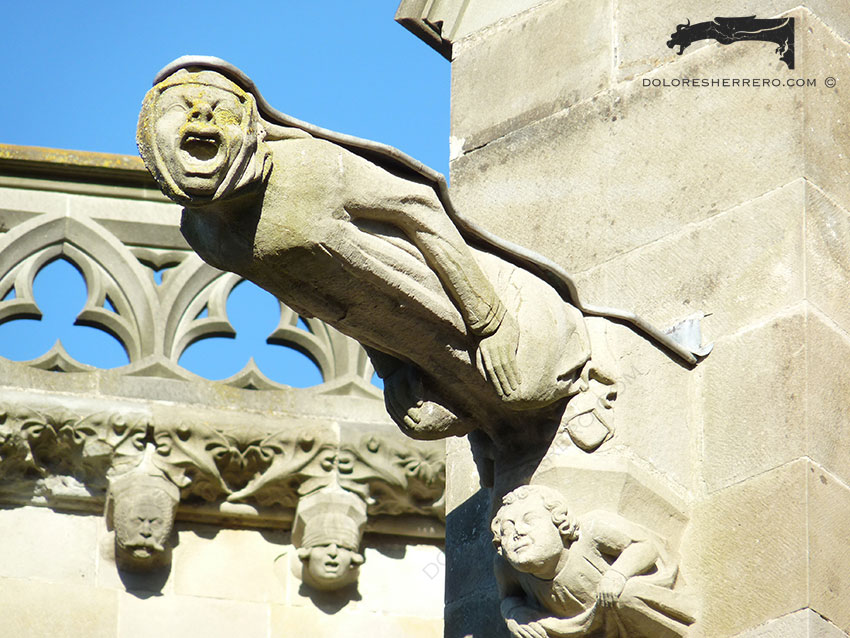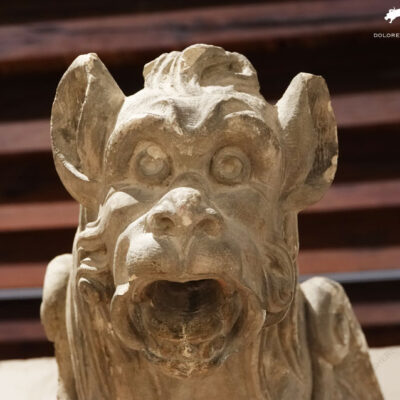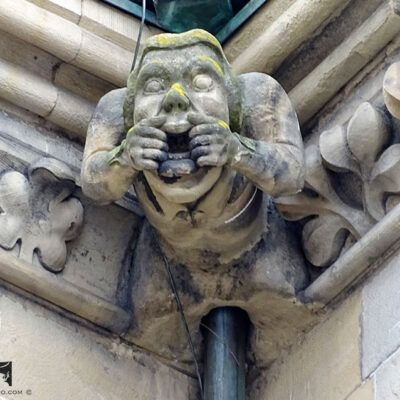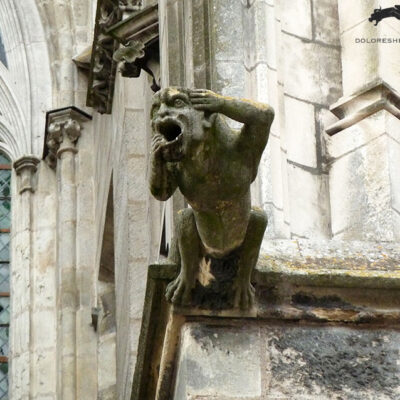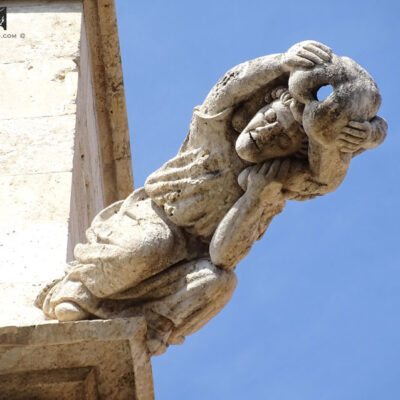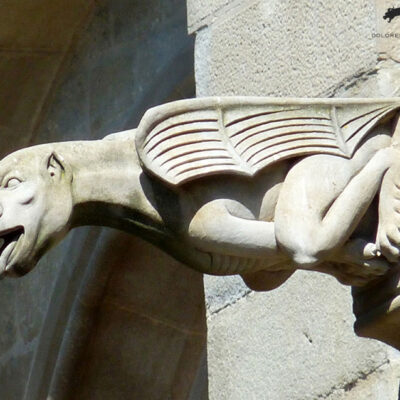In a previous post I talked about expressiveness in images of gargoyles. There’s no doubt that one of the most intriguing, surprising and attractive aspects of gargoyles are the gestures and expressions of these fascinating, impressive figures.
One of the gestures you can sometimes see, although it’s not one of the most common, is the scream.
On the portrayal of the scream in the Middle Ages, art historian Nurith Kenaan-Kedar says that the screams you sometimes see on corbels are those of sinners being tormented in hell, although they can also show or be interpreted as an attempt to encapsulate and describe the pain and terror of this world. In marginal art, the individual suffering of pain can be seen in the mad, the sick, the old and sometimes in troubadours. The visual representation of individual emotions was intended to depict and convey pain and suffering, and those who scream are marginal figures: drunkards, beggars, the diseased, prostitutes, even the artists themselves.
In her research, this author argues that the most significant driving force behind portrayals of the scream in 12th century art was precisely in marginal sculpture, including water spouts and gargoyles, in which artists depicted the scream spontaneously, as something direct, dramatic and different than any other image ever seen before in the Middle Ages. In the 12th and 13th centuries, the scream was “heard” in visual and written descriptions of the condemned as they lamented their punishments in hell; it’s also similarly described in a number of texts on the tortured and their torturers, as well as in some images in paintings and engravings of the condemned and demons in the final judgement.
The most common portrayals of the scream are accompanied by prominent tongues, bared teeth, strident laughter and so on, all of which are characteristic features of the devil. However, in human figures these features express recrimination and provocation. The images of women screaming are normally repeated in marginal Romanesque and Gothic sculpture; the head is often shown bent forwards or backwards and the hands are seen to be tugging at the hair. In the 15th century the gesture of screaming was depicted in a very exaggerated and extreme way.
Apart from interesting literature on the subject, the scream ― in addition to other gestures to be discussed in future posts ― is a small fragment of the limitless range of expressiveness that gargoyle sculptors wanted to reflect in every single one of their figures, showing their amazing and infinite artistic creativity.
Gargoyles
- Gothic Tower in Alcañiz (Spain)
- Monterrey Palace in Salamanca (Spain)
- Church of Santa María la Mayor in Valderrobres (Spain)
- Cathedral of María Inmaculada in Vitoria (Spain)
- Cathedral of St. Michel in Carcassonne (France)
- Basilica of St. Nazaire in Carcassonne (France)
- Cathedral of María Inmaculada in Vitoria (Spain)
- Royal Château of Blois (France)
- Basilica of St. Nazaire in Carcassonne (France)
- Château Royal in Blois (France)
- Palma de Mallorca Cathedral (Spain)
- Basilica of St. Nazaire in Carcassonne (France)
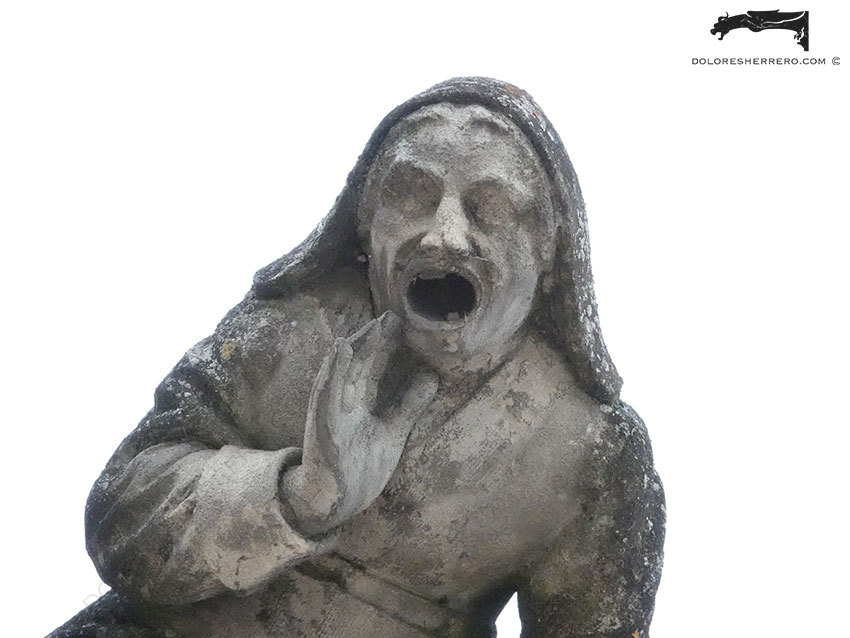
Château Royal in Blois (France)
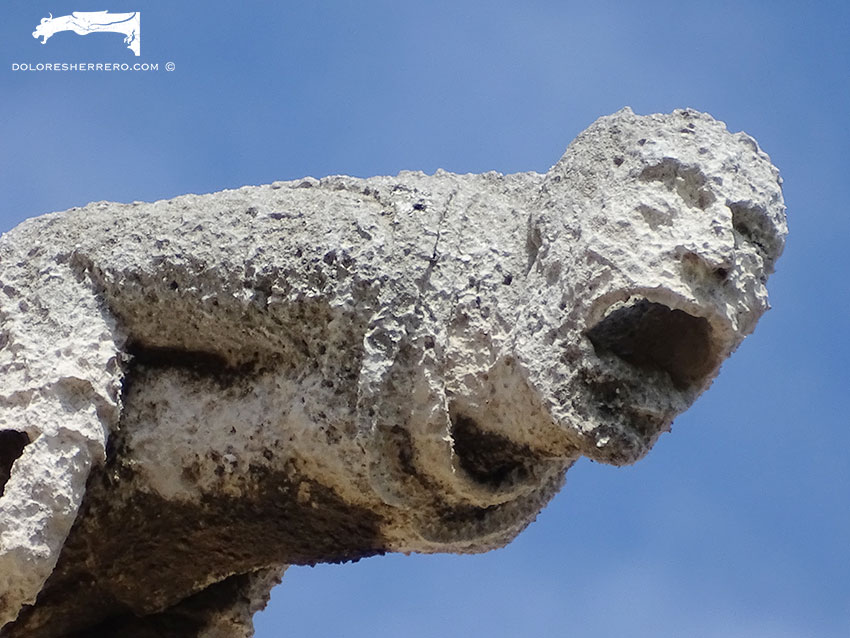
Palma de Mallorca Cathedral (Spain)
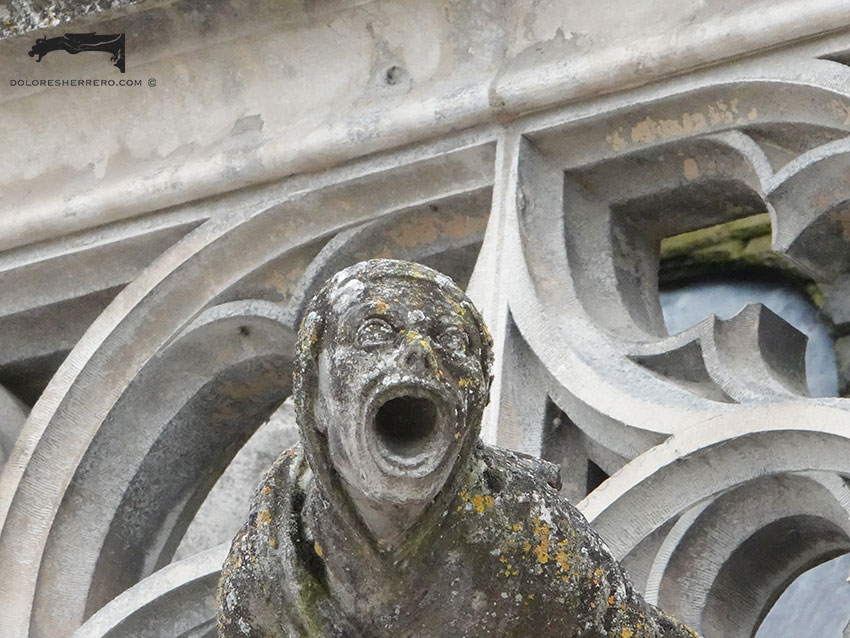
Château Royal in Blois (France)
Bibliography consulted
KENAAN-KEDAR, N., Marginal Sculpture in Medieval France. Towards the deciphering of an enigmatic pictorial language, Hants (England) and Vermont (USA), Scolar Press and Ashgate Publishing Company, 1995.

Doctor of Art History and researcher specializing in the study of gargoyles.
I am Dolores Herrero Ferrio, and my thesis, “An Approach to the Study of Gargoyles of Gothic Cathedrals in Castilla and León”, is dedicated to the study of these fascinating figures.
If you like gargoyles and art history, you will also enjoy my book, “The Gargoyle and Its Iconography,” a book I have written with great care for those interested in the world of gargoyles.
I have created my own Encyclopedia of Gargoyles, a Gargopedia to share with you, where you will discover all the secrets and wonders of these enigmatic sculptures.
I hope you enjoy this Gargopedia as much as I have enjoyed creating it, and remember that each gargoyle has a story to tell, and here you will discover them all.
